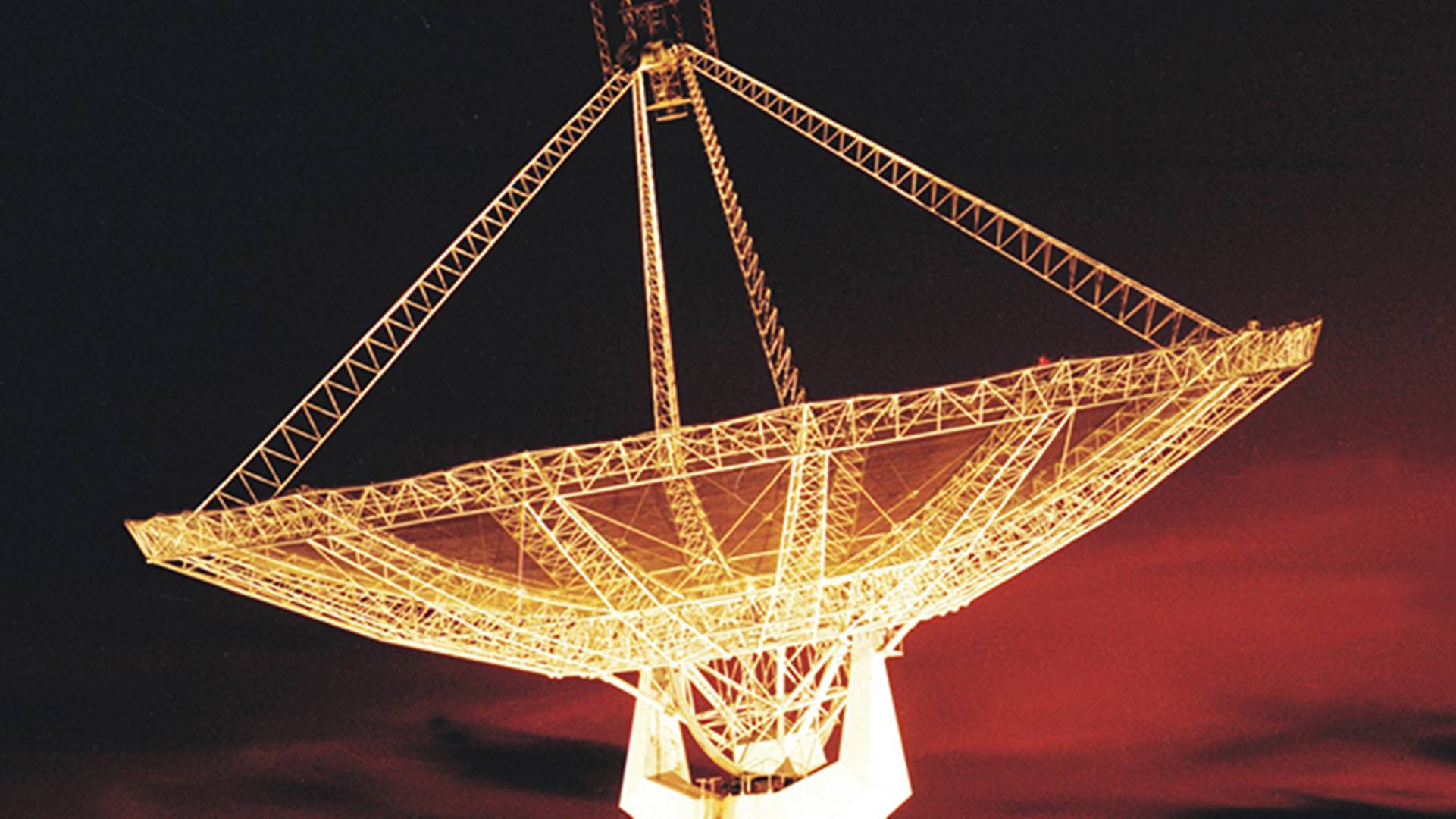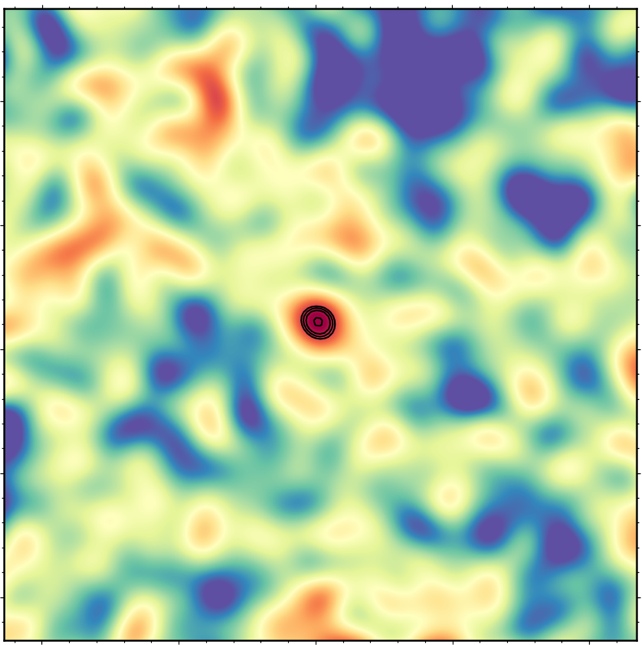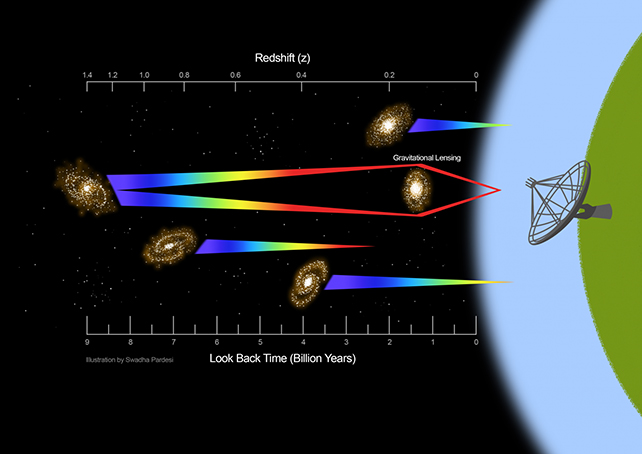Hydrogen is a key building block of the cosmos

Whether stripped down to its charged core or piled into a molecule, the nature of its presence can tell you a lot about the Universe’s features on the largest of scales.
For that reason, astronomers are very interested in detecting signals from this element, wherever it can be found.
Now the light signature of uncharged, atomic hydrogen has been measured further from Earth than ever before, by some margin. The Giant Metrewave Radio Telescope (GMRT) in India has picked up a signal with a lookback time – the time between the light being emitted and being detected – of a huge 8.8 billion years.

That gives us an exciting glimpse of some of the earliest moments in the Universe, which is currently estimated to be in the region of 13.8 billion years old.
“A galaxy emits different kinds of radio signals,” says cosmologist Arnab Chakraborty, from McGill University in Canada. “Until now, it’s only been possible to capture this particular signal from a galaxy nearby, limiting our knowledge to those galaxies closer to Earth.”
In this case, the radio signal emitted by atomic hydrogen is a light wave with a length of 21 centimeters. Long waves aren’t very energetic, nor is the light intensity, making it difficult to detect at a distance; the previous record lookback time stood at a mere 4.4 billion years.
Due to the vast distance, it traveled before being intercepted by the GMRT, the 21-centimeter emission line had been stretched by expanding space to 48 centimeters, a phenomenon described as the redshifting of light.
The team used gravitational lensing to detect the signal, which originates from a distant star-forming galaxy called SDSSJ0826+5630. Gravitational lensing is where light is magnified as it follows the curving space surrounding a massive object that sits between our telescopes and the original source, effectively acting as a huge lens.

“In this specific case, the signal is bent by the presence of another massive body, another galaxy, between the target and the observer,” says astrophysicist Nirupam Roy, from the Indian Institute of Science.
“This effectively results in the magnification of the signal by a factor of 30, allowing the telescope to pick it up.”
The results of this study will give astronomers hope for being able to make other similar observations in the near future: the distances and lookback times that were previously off-limits are very much now within reason. If the stars align, that is.
Atomic hydrogen is formed as hot, ionized gas from the surroundings of a galaxy starts to fall onto the galaxy, cooling down along the way. Eventually, it turns into molecular hydrogen, and then into stars.
Being able to look back so far in time can teach us more about how our own galaxy formed in the beginning, as well as lead astronomers toward a better understanding of how the Universe behaved when it was just getting started.
These latest findings will “open up exciting new possibilities for probing the cosmic evolution of neutral gas with existing and upcoming low-frequency radio telescopes in the near future,” write the researchers in their published paper.
The research has been published in the Monthly Notices of the Royal Astronomical Society.


Napomena o autorskim pravima: Dozvoljeno preuzimanje sadržaja isključivo uz navođenje linka prema stranici našeg portala sa koje je sadržaj preuzet. Stavovi izraženi u ovom tekstu autorovi su i ne odražavaju nužno uredničku politiku The Balkantimes Press.
Copyright Notice: It is allowed to download the content only by providing a link to the page of our portal from which the content was downloaded. The views expressed in this text are those of the authors and do not necessarily reflect the editorial policies of The Balkantimes Press.
